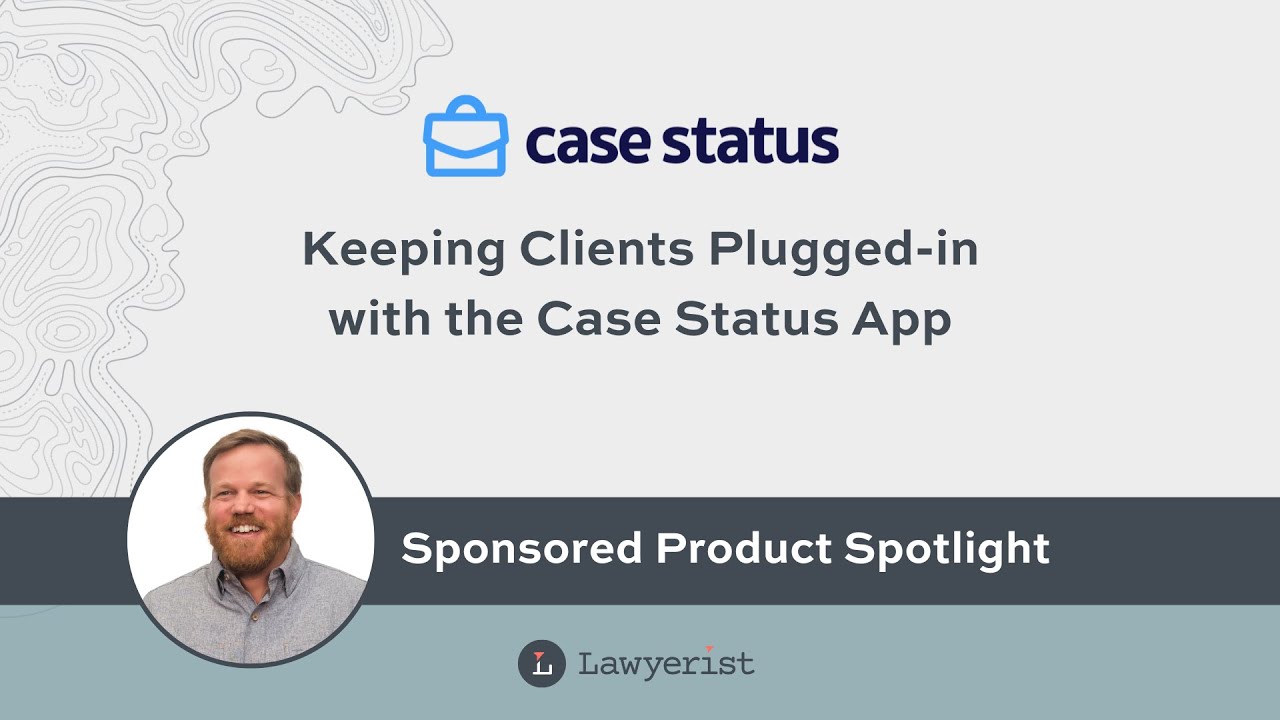Keep Clients Plugged-in with the Case Status App

Clients have many options for contacting their attorney: phone, email, text, client portal, and more. This situation creates more places to check, eating time and delaying responses for the firm.
Case Status solves this problem with tools to channel client communication through a focused mobile app. How does this differ from a practice management client portal? Immensely successful client adoption. While most portals go unvisited by clients (30% usage), Cases Status firms see 80% adoption of their mobile app.
Six Benefits of an App-Based Client Communication Tool
Paul Bamert and Jose Figueroa outlined six challenges facing law firms and how Case Status addresses them.
Client Portals
Most web-based practice management systems offer a client portal, but most are web-based. In contrast, Case Status provides a native mobile app for iOS and Android, which earned a 4.9 out of 5 rating from thousands of user reviews. With a mobile app, firms meet clients where they are; 93% of the five hours a day the average person spends on a smartphone, they spend in apps.
Offering a client portal that clients use reduces scattershot client interaction and prevents time-consuming “case update” phone calls. Additionally, Case Status integrates with many practice management vendors, providing a single source of truth for information.
Time
With Case Status, a firm can automate repetitive tasks and communications. Jose demonstrated how a customizable in-app experience walks clients through their matter stages. With automated triggers, the firm provides client updates in-app. This includes scheduled “no-update updates” telling the client that the matter is in process, but nothing changed recently. Background updates boost firm efficiency, with one mid-size firm saving 366 hours in nine months and decreasing related inbound phone calls by 51%.
Client Communication
Clients choose their preferred approach—phone, email, text, or portal—causing craziness. The average firm takes 48 to 72 hours to respond to a client’s outreach. With Cases Status, the delay drops to 6.5 hours. How? Case Status firms channel all client communication to the mobile app. Funneling allows the firm to respond faster to client requests, improve its client communications, and exceed client expectations.
All employees can read and respond to in-app client messages and send the client files and do this in a way that syncs with the firm’s existing practice management system while providing better security than email or SMS offers.
Language Barriers
8-9% of people needing legal services don’t speak English. In some client communities, the number exceeds 40%. Case Status uses Google’s Neural Machine Translation (GNMT) system to translate in-app messages in 138 languages. This works in both 1-to-1 messages, between a client and a firm employee, and 1-to-many, such as a templated message sent to many clients. GNMT allows an English-only attorney to read foreign language messages translated in real-time. GNMT translates both inbound and outbound messages.
Client Satisfaction
Law firms often guess what the client thinks. One-half of legal services providers fail to measure client satisfaction at all—the other half measure only at a matter’s conclusion. Systematizing client feedback, especially early in the representation, brings big wins in client referrals and reviews.
With Case Status’ tools, the firm can ask the client to rate the representation on a scale of 1 to 10. Think of a bad rating as a “check engine light” for the matter. Learning of an unhappy client early gives the firm time to fix the problem. By analyzing client surveys, the firm discovers where its processes or communications failed and revises procedures to create a response playbook. For clients who rate the firm a nine or ten, that list tells the firm whom to solicit for online endorsements.
Sustainable Growth
A great reputation flows from providing great service. Case Status helps firms build sustainable growth by identifying happy clients, being front-of-mind with clients, and asking satisfied clients to write reviews or refer friends. Efficient communication leads to good client surveys that the firm can ask for reviews on Avvo and Google. The app also contains a referral button to send the lawyer’s electronic business card to friends and family.
Getting Started
If your firm wants to transform client engagement and meet clients where they are, visit www.casestatus.com to schedule a demo.
The post Keep Clients Plugged-in with the Case Status App appeared first on Lawyerist.


